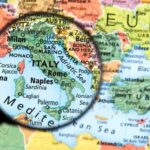The current travel Italy restrictions have brought significant changes to the way individuals can visit and move within the country, as a result of the ongoing impact of COVID-19. As the world continues to grapple with the effects of the pandemic, it is essential for travelers to stay informed about Italy’s entry requirements, quarantine regulations, internal travel restrictions, changes in transportation, health and safety measures, destination-specific restrictions, and any potential future outlook.
With COVID-19 impacting travel globally, Italy has implemented strict entry requirements for travelers entering the country. From specific documentation to necessary tests, there are several considerations that individuals must take into account before planning their trip. Additionally, understanding and adhering to quarantine regulations upon arrival in Italy is crucial for both residents and tourists alike.
Moreover, it is important to consider any travel restrictions within Italy that may affect movement between cities or visiting popular tourist attractions. These limitations can impact an individual’s itinerary and experience while in Italy. Furthermore, it is essential to understand any shifts in transportation options – such as flights, trains, and buses – as well as any disruptions that may occur during a traveler’s visit due to these changes.
Italy’s Entry Requirements
For travelers entering Italy, there are specific entry requirements that must be met in order to navigate the current travel restrictions. In response to the COVID-19 pandemic, Italy has implemented certain measures to ensure the safety and well-being of both residents and visitors. The following are the entry requirements for travelers entering Italy:
- Proof of vaccination or a negative COVID-19 test result: Travelers arriving in Italy must provide proof of full vaccination or a negative test result obtained within a specific timeframe before their arrival. This requirement applies to all travelers, regardless of their nationality.
- Digital Passenger Locator Form (dPLF): All individuals entering Italy are required to complete a dPLF providing information about their trip and contact details. This form is essential for contact tracing purposes and helps authorities monitor the movement of incoming travelers.
- Testing upon arrival: In addition to pre-travel testing, Italy also conducts random testing at airports for incoming passengers. If selected, travelers must undergo further testing upon arrival in Italy.
Travelers should ensure they have all necessary documentation and meet these entry requirements before embarking on their journey to Italy.
Upon arrival in Italy, quarantine regulations may apply based on an individual’s vaccination status and country of origin. While fully vaccinated travelers from certain countries may be exempt from quarantine, unvaccinated or partially vaccinated individuals may be subject to quarantine upon arrival.
The duration of quarantine can vary depending on the traveler’s circumstances, but it typically ranges from 5 to 10 days. It’s important for travelers to familiarize themselves with these regulations and plan accordingly when visiting Italy./.
Quarantine Regulations
Italy’s quarantine regulations for travelers entering the country are an essential aspect to consider when planning a trip. As of the current travel Italy restrictions, all individuals arriving in Italy from international destinations are required to undergo a 10-day quarantine. This rule applies to both Italian residents and foreign visitors, and it is crucial to be aware of these regulations before embarking on a journey to Italy.
During this period, travelers must fill out a self-declaration form stating their reasons for entering Italy and provide evidence of a negative COVID-19 test taken within 48 hours prior to arrival. Additionally, individuals may be subjected to rapid antigen testing at the airport upon disembarkation. It is important to note that failure to comply with these regulations can result in hefty fines and legal consequences.
Exceptions to the quarantine requirement exist for travelers who have been fully vaccinated against COVID-19 or those who have recovered from the virus in the past six months. However, even with these exceptions, proof of vaccination or recovery must be provided, along with other necessary documentation. It is advisable for travelers to stay updated on these requirements as they may change in response to the evolving situation with the pandemic.
- Fill out a self-declaration form
- Provide evidence of a negative COVID-19 test
- Undergo rapid antigen testing at the airport
- Show proof of vaccination or recovery from COVID-19
Travel Restrictions Within Italy
When traveling within Italy, there are specific restrictions and limitations that tourists need to be aware of. As of the current travel italy restrictions, there are no internal travel restrictions within the country. This means that individuals can move freely between regions without any specific requirements or limitations.
It is important to note that while there are no internal travel restrictions in place, travelers should still adhere to any local guidelines or regulations implemented by the Italian government or regional authorities. These may include rules regarding mask-wearing, social distancing, and capacity limits in public spaces such as restaurants, museums, and transportation hubs.
Additionally, it is important for tourists to stay informed about any changes or updates to the travel restrictions within Italy. As the situation surrounding COVID-19 continues to evolve, there may be new regulations or guidelines put in place to ensure the health and safety of both residents and visitors. Therefore, it is advisable for travelers to regularly check official government websites or consult with local authorities for the latest information on travel restrictions and guidelines within Italy.
Ultimately, while there are currently no internal travel restrictions in place within Italy, travelers should remain vigilant and adaptable as they navigate through different regions in order to ensure a safe and enjoyable experience.
Changes in Transportation
As a result of the COVID-19 pandemic, Italy has implemented various travel restrictions to prevent the spread of the virus. These restrictions have led to significant changes in transportation within the country, impacting both domestic and international travel. Travelers should be aware of these changes in order to plan their trips accordingly.
Flights
Italy has experienced a reduction in international flights due to travel restrictions and decreased demand. Many airlines have reduced their flight schedules or suspended certain routes to and from Italy. Additionally, travelers may encounter health screenings and temperature checks at airports, as well as requirements for documentation such as negative COVID-19 test results or vaccination certificates.
Trains and Buses
Domestic transportation within Italy has also been affected by the pandemic. Train and bus services have implemented safety measures including mandatory mask-wearing, reduced capacity to allow for social distancing, and enhanced cleaning protocols. Travelers should check the latest schedules and regulations for train and bus travel in Italy before making any arrangements.
Other Forms of Transportation
In addition to flights, trains, and buses, other forms of transportation such as ferries and taxis have been impacted by the travel restrictions in Italy. Ferries operating between Italian islands may have limited schedules or capacity limitations, while taxi services may require passengers to wear masks and use hand sanitizer before entering the vehicle.
These changes in transportation are crucial for travelers to consider when planning their trips to Italy. It is important to stay updated on the latest travel advisories and regulations regarding transportation within the country as they may continue to evolve in response to the ongoing pandemic.
Health and Safety Measures
Italy has implemented various health and safety measures to ensure the well-being of travelers in light of the COVID-19 pandemic. These measures are crucial in mitigating the spread of the virus and protecting both visitors and locals.
Mask Mandates and Social Distancing
One of the key health and safety measures in place in Italy is the mandatory use of face masks in public spaces. This includes indoor settings such as shops, public transportation, and any crowded outdoor areas where social distancing may be difficult to maintain. In addition to mask mandates, travelers are also required to adhere to social distancing guidelines, keeping a minimum distance of one meter from others.
Sanitization Protocols
Another important aspect of Italy’s health and safety measures is the emphasis on cleanliness and sanitization. Travelers should expect to encounter hand sanitizing stations in various public places, including airports, train stations, hotels, and tourist attractions. Regular hand hygiene is strongly encouraged, along with frequent sanitization of high-touch surfaces.
Health Screenings and Testing
In addition to these basic preventative measures, travelers entering Italy may be subject to health screenings or testing upon arrival. This could include temperature checks at airports or ports of entry. Depending on the traveler’s point of origin or recent travel history, testing for COVID-19 may also be required as part of the entry process.
These health and safety measures are essential considerations for anyone planning a trip to Italy amidst ongoing travel restrictions. It is important for travelers to stay informed about these guidelines, as they may evolve based on the changing circumstances related to COVID-19.
Destination-Specific Restrictions
Italy is a popular tourist destination with diverse attractions, including historic landmarks, stunning landscapes, and delicious cuisine. However, due to the ongoing impact of COVID-19, the country has implemented specific restrictions in popular tourist destinations to ensure the safety of both visitors and local residents.
In Venice, known for its iconic canals and gondola rides, there are limitations on the number of people allowed on gondolas to maintain social distancing. Additionally, some of the smaller islands in the Venetian Lagoon have restricted access to tourists in an effort to minimize crowding and prevent the spread of the virus.
In Rome, home to ancient ruins such as the Colosseum and the Roman Forum, there are capacity limitations at popular tourist sites to prevent overcrowding. Many attractions require visitors to book tickets in advance for a specific date and time slot. Additionally, face masks are mandatory in indoor spaces and crowded outdoor areas throughout the city.
In Florence, renowned for its Renaissance art and architecture, museums such as the Uffizi Gallery and Accademia Gallery have implemented timed entry tickets to control visitor flow. Some smaller art galleries may have restricted access or limited opening hours. Visitors should also be aware of any local regulations regarding mask-wearing and social distancing in public spaces within the city.
As travelers plan their trips to Italy, it is crucial to stay informed about destination-specific restrictions in popular tourist areas. By staying updated on these regulations, travelers can ensure a smoother and more enjoyable experience while exploring this beautiful country despite travel Italy restrictions.
Future Outlook
Italy, like many other countries, has implemented travel restrictions due to the impact of COVID-19. As the situation continues to evolve, it’s important for travelers to stay informed about Italy’s entry requirements and any quarantine regulations in place. The future outlook for travel to Italy may see changes in these restrictions as the country navigates the ongoing pandemic.
Currently, travelers entering Italy are subject to specific entry requirements, which may include providing a negative COVID-19 test result or undergoing testing upon arrival. Additionally, quarantine regulations have been put in place for those arriving from certain countries, with exceptions made for travelers who can provide evidence of vaccination or recovery from the virus.
In terms of transportation, there have been notable disruptions and limitations in flights, trains, and other forms of transportation within Italy. This has impacted both domestic and international travel to and within the country. Looking ahead, it’s possible that these disruptions may persist or improve depending on the progress of the pandemic.
| Entry Requirements | Negative COVID-19 Test or Proof of Vaccination/Recovery Required |
|---|---|
| Quarantine Regulations | Mandatory quarantine for arrivals from certain countries; exceptions for vaccinated/recovered individuals |
| Transportation Disruptions | Limited flights, train services affected; ongoing impact on domestic and international travel within Italy |
Conclusion
In conclusion, it is essential for travelers to stay informed about the travel restrictions in Italy before planning a trip. COVID-19 has significantly impacted travel, and Italy has implemented specific entry requirements and quarantine regulations to ensure the safety of both residents and visitors. It is crucial for travelers to be aware of the documentation, tests, and quarantine rules when entering the country.
Additionally, internal travel restrictions within Italy may affect tourists’ movement and activities. It is important to check for any limitations on accessing specific destinations, attractions, restaurants, or accommodations. Furthermore, changes in transportation and health and safety measures should also be considered when planning a trip to Italy.
Looking ahead, there is potential for changes in travel restrictions in the future as the situation evolves. Travelers should regularly check for updates or developments in Italy’s travel regulations. By keeping informed and staying updated on Italy’s travel restrictions, travelers can ensure a smoother and more enjoyable experience during their visit to this beautiful country amidst the challenges presented by COVID-19.
Frequently Asked Questions
Are There Any Travel Restrictions to Italy?
Currently, there are travel restrictions to Italy due to the COVID-19 pandemic. Travelers from the United States are required to follow specific guidelines, including testing and quarantine requirements. It’s important to stay updated on these restrictions before planning a trip.
What Is Required for a US Citizen to Visit Italy?
For a US citizen to visit Italy, a valid passport is required with at least six months validity beyond the planned date of departure. Additionally, travelers may need to obtain a visa depending on the purpose and duration of their visit. It’s also essential to be aware of the current travel restrictions and health protocols in place.
Can I Wear Jeans in Italy?
Yes, you can wear jeans in Italy. Italians generally have a well-dressed style, and jeans are considered acceptable in many casual settings. However, it’s always a good idea to blend in with the local fashion by avoiding overly casual or sloppy attire, especially when visiting more formal places or during evening outings.

I’m a passionate traveler, writer, and Italophile. My fascination with Italy’s history, art, and culture has led me on countless adventures across the Italian landscape. Through “I Live Italy,” I share my love for this extraordinary country and aims to inspire others to explore its boundless beauty.





